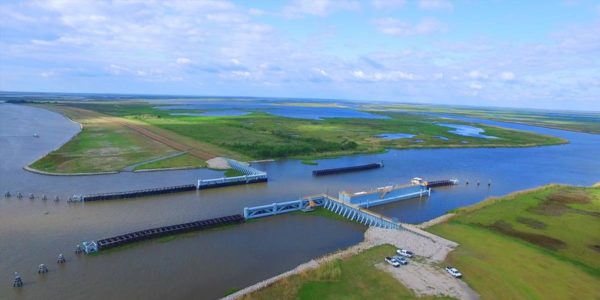Tracking Coastal Progress: Knowledge is Power
Knowledge is Power.
The deterioration of Louisiana’s coast is serious. Thankfully, serious steps have been taken to shore up our coastline with a strong, science-based process to tackle the issue. There is no short-term fix. Coastal protection and restoration efforts require a sustained commitment and a knowledgeable public that can hold policy makers accountable.
As an independent policy group, The Public Affairs Research Council of Louisiana (PAR) keeps a watchful eye on the state’s governance and financing of coastal solutions and educates the public about the problems and progress. PAR also works to give citizens the tools they need to understand the issues facing our coast. PAR educational videos, one that explains the how the Master Plan is devised and the other showing how coastal projects are developed and approved, are now available to the public. These succinct videos give citizens an understanding of how key coastal decisions are made.

The Situation
Louisiana has lost nearly 1,900 square miles of land since the 1930s. If no action is taken, the state is predicted to lose another 4,120 square miles over the next 50 years. The estimated damage from flooding will increase from an average of $2.7 billion annually up to an average of approximately $19.9 billion annually.
A serious plan to save the coast
In 2005, Louisiana created the Coastal Protection and Restoration Authority to coordinate the local, state and federal efforts for comprehensive coastal protection and restoration. The CPRA consolidated coastal wetlands restoration and levee protection divisions within its transportation and natural resources departments under one new agency.
One of CPRA’s most important responsibilities is to develop and revise a Coastal Master Plan. This critical plan guides our efforts to protect and restore Louisiana’s damaged and diminishing coast. The Louisiana Legislature requires the CPRA to update the plan every six years, based on a rigorous process involving key stakeholders and the public. The next Master Plan is due in 2023.
While a lot of work is still to be done, there have been several accomplishments:
$21.4 billion Secured for Coastal Protection and Restoration Projects
47,646 Acres of Land Benefitted
327 Miles of Levee Improvements
60 Miles of Barrier Islands & Berms Constructed
Constant vigilance
The persistent disappearance of Louisiana coastlands poses a threat to the state and national economy as well as to the coastal communities and their livelihoods. Louisiana’s leaders have a responsibility and a great opportunity to address this crisis by using newly allocated resources efficiently and effectively for restoration and protection. Citizens must be vigilant in ensuring transparency and accountability in its coastal spending practices and decision-making process.
Attempts to raid or redirect funding dedicated to coastal restoration must be prevented. Likewise, politics must not drive the planning, funding and project selection. Although these potential problems have been warded off in recent years, we should not lower our guard looking toward the future.
PAR’s report, The New Louisiana Purchase: Building Trust With Sound Coastal Investment Policies, makes recommendations on important coastal issues.
In particular, two specific matters should receive immediate attention:
• CPRA transparency has greatly improved during the current administration through more effective stakeholder engagement. However, there is ample opportunity to improve the accountability in coastal finance through more transparent retrospective reporting and better tracking of expenditures and projections.
• The state owes the federal government $1.74 billion for Louisiana’s share of the cost for the Hurricane and Storm Damage Risk Reduction System (HSDRRS), a major flood-protection program after Hurricane Katrina. The state’s annual $100 million payments are scheduled to begin in October 2021. However, the Edwards administration will seek to take advantage of recently passed federal legislation that will reduce Louisiana’s cost if the debt is paid in the next three years. PAR is following this developing issue.
The state and its local governments must lead by example and make responsible investment decisions. By being informed about the issues surrounding restoration, citizens can help keep policy makers accountable and ensure the long process of rebuilding the coast is on track.
Funding for the videos was provided by the Walton Family Foundation.
